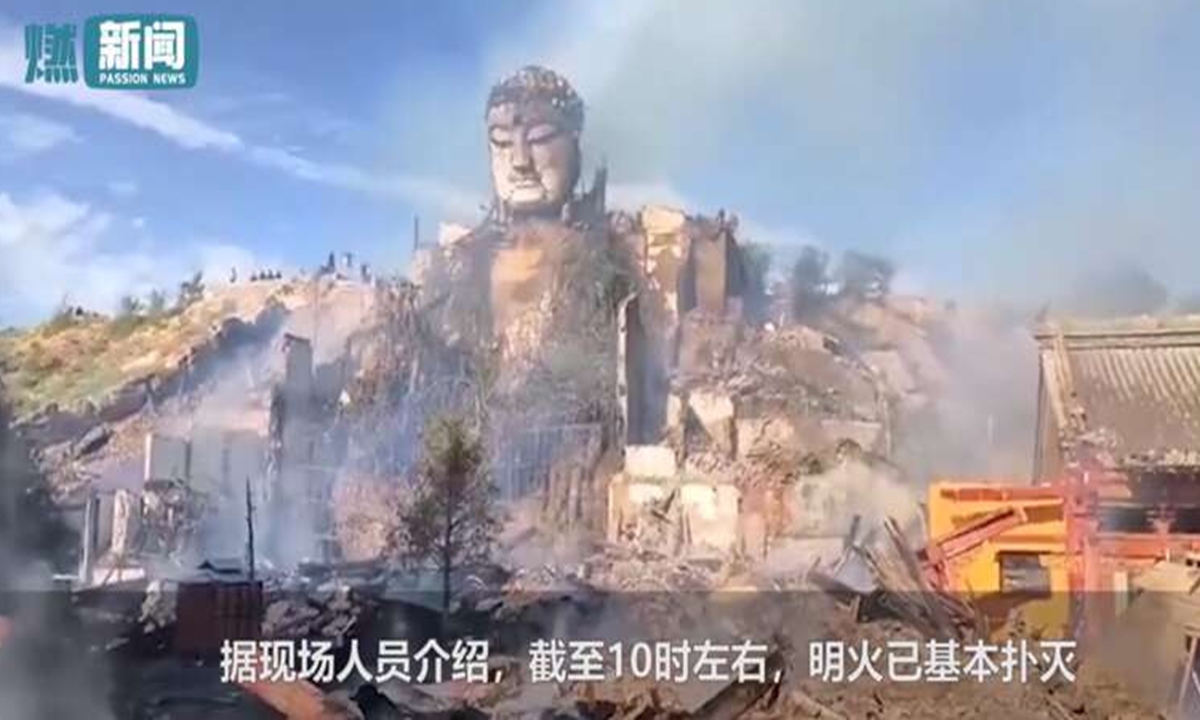
Shandan Great Buddha Temple, a national 4A-level tourist attraction in Northwest China's Gansu Province was on fire on July 24, 2023. No one was injured in the fire, but the wooden outbuilding of the temple was completely burnt down.
A Buddhist temple that is home to a national representative Buddha in Shandan, Northwest China's Gansu Province, caught on fire Monday morning. No one was injured in the fire, but the wooden outbuilding of the temple was completely burnt down.
Shandan Great Buddha Temple is a national 4A-level tourist attraction. The one inside the temple on fire was the Great Buddha's Hall, a 7-story wooden building, 39 meters tall, 30 meters long and 27 meters wide.
The tourist attraction was formed from the temple's architectural complex, which was opened in 1998. It is also where the ruins of the two temple courtyard walls are located.
A total of 46 firefighters and 9 fire trucks responded to the scene, and the fire was fully contained as of 10 am, Monday morning. The cause of the fire is undetermined.
But according to the local authority of Shandan Tuesday morning, the wall ruins are perfectly preserved and have not been affected by the fire, while the wooden structure of the Great Buddha's Hall was burnt down.
Inside the palace is the country's largest indoor Buddha clay statue, which is 35 meters tall, sitting on a three-meter-tall lotus pedestal.
Together with Zhangye gigantic reclining Buddha and Wuwei standing Buddha statues, they are known as the Three Great Buddhas of Hexi Corridor, a string of oases running the length of Gansu.
From the videos circulating on Chinese social media, the originally indoor Buddha can be seen exposed in the open air with some parts of the clay burnt out, as its wooden outbuilding was completely burnt into pieces.
A local resident surnamed Cai told the Global Times that the Shandan Great Buddha Temple was renovated in 2021, which took "a year." "It was a popular location for us locals, but not a must-go for tourists from other provinces."
Dating back to over 1,500 years ago, the temple was built during the Northern Wei Dynasty (386-534). It underwent several renovations during the Ming (1368-1644) and Qing (1644-1911) dynasties.
In the year of 2022, the staff completed an all-around upgrade where equipment including circuit lighting, fire protection system, monitoring and security were changed out.
According to Lei Ai, head of the renovation team of the temple, the material used for repairing the ancient building was all pine wood imported from Russia, and the pigments of the painted patterns are made of natural minerals.
The temple is located at the foot of Liaogao Mountain, five kilometers away from Shandan county in Zhangye, Gansu Province, which is famous worldwide for both its Buddhist cultural relics and natural scenery such as the special Danxia landform.




